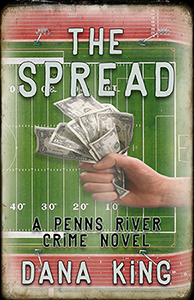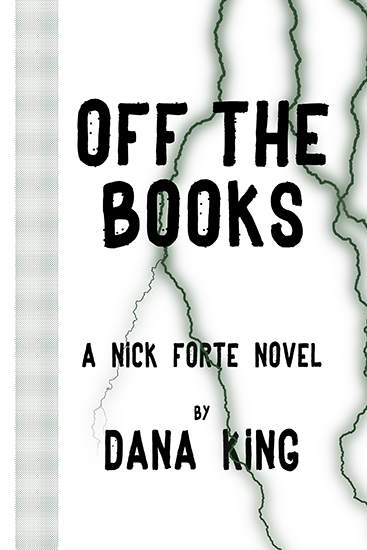End of the year reviews are often of interest only to the
person writing them. I get that, but this is my blog and I have total editorial
authority, so get over it.
JANUARY
Not much went on except the usual post-holiday letdown.
FEBRUARY
The shortest month, and mercifully so.
MARCH
The sixth Nick Forte Private eye novel, Off the Books,
debuted on the 15th.
Also that week, The Beloved Spouse™ and I attended the
Suffolk (VA) Mystery Writers Festival. This is a unique annual event that I
highly recommend for both authors and readers, as it provides opportunities for
interaction not always found elsewhere.
I received my first Social Security check on the 20th.
Thank you to everyone who is still working and contributing payroll taxes. I
did so without complaint for over forty years, so you’re goddamn right I’m
entitled to collect now. Make sure the same happens for you.
APRIL
While the rest of the country wasted April 8 watching a total eclipse, of which several will occur
during a normal lifetime, we did something truly unique by waiting for word of when our first grandchild would join the world. Our vigilance was rewarded at 1:24 EDT when Madeline Rose Blewett checked in at seven pounds, six ounces and twenty inches. Much of the year’s remaining news will have to do with this young lady in one way or another.
At month’s end we attended the Malice Domestic conference in
North Bethesda Rockville, Maryland. Malice has become a regular stop for
us and this year’s event did nothing to dampen our enthusiasm. Special thanks
to Bruce Coffin for inviting us to share his table at the banquet.
MAY
Our first trip to Florida to see Maddie was cut short when
yours truly broke out in a rash no one could identify. With the baby only six
weeks old and us only knowing what wasn’t wrong with me (I didn’t have
COVID, the flu, mono, or a couple of other things I was tested for) we decided
not to take any chances and came home early. It was still a thrill to hold my
granddaughter for the first time.
JUNE
Road trip! My elder niece was married to a young man we
genuinely like in Estes Park, Colorado on the 14th. This gave us an
excuse to load the car and make stops at The Badlands, Custer (SD) State Park,
Lusk WY, Estes Park (obviously), Lakewood CO (for the day after party),
Ogallala NE, Fort Kearney NE, and the Pittsburgh area to see friends,
relatives, Primanti Brothers and Oakmont bakery before arriving home on the 23rd.
A memorable trip with only minor glitches.
JULY
We traveled to Hillsborough, North Carolina for Noir at the
Bar at Yonder: Southern Cocktails and Brew. Eryk Pruitt and his lovely wife
Lana Pierce have established a reputation for hosting excellent events, so we see
many of the same faces whenever we go.
AUGUST
We spent August close to home, attending the Howard County
Fair and NASA’s Goddard Space Flight Center. Both were new to me and were not
only educational but entertaining.
SEPTEMBER
An action-packed month. We spent the 13th – 15th
in Columbia, Maryland at the Creatures, Crimes, and Creativity conference,
which has become the pre-eminent event on our calendar. This year’s
get-together proved why C3 holds its pre-eminence.
Home for a day to do laundry and pack before leaving for
Florida again. Maddie was five months old and Sleuthfest was to take place
right across the bay in St. Petersburg on the 26th – 29th;
I was scheduled to teach a class on dialog. The family part of the trip went
without a hitch but we had to return early (again) to escape two days ahead of
Hurricane Helene. The conference was canceled and The Sole Heirs’ house
suffered some water damage, but nothing too serious.
OCTOBER
Needing time to catch our breath, October as marked by a day
trip to Westminster, Maryland to visit Baugher’s Orchards to buy cider; our
local outlet for their fine product had closed. Yes, we have reached an age
where buying cider is not only worth a full day, but is memorable.
Even better was a chance to see The Sole Heirs and Maddie,
as they came through Maryland on their way to Massachusetts to visit the other
side of the family.
NOVEMBER
The Sole Heirs invited the whole family – three
grandmothers, two grandfathers, an aunt and uncle, and a close family friend –
to Tampa for Thanksgiving weekend. In addition to the big feast on Thursday, we
went to the aquarium, the zoo, saw an outstanding model train exhibit, and got
to ride on the Coast Guard float in the annual St. Petersburg Christmas parade.
November also marked the debut of my first Western, Dead
Shot: The Memoir of Walter Ferguson, Soldier, Marshal, Bootlegger. I’ve
abandoned all pretext of working with or in the publishing industry, so Walt’s
story is available only through my web
site, where the e-books are free to download.
DECEMBER
Maddie’s christening too place at St. Mary’s Church in
Annapolis, Maryland on December 15th. A fitting end to an excellent
year.
I hope all of you had years at least as good and look
forward to a great 2025. A lot of people are looking at tough times once the
new administration takes office, so let’s keep them in mind and help where and
when and however we can.


